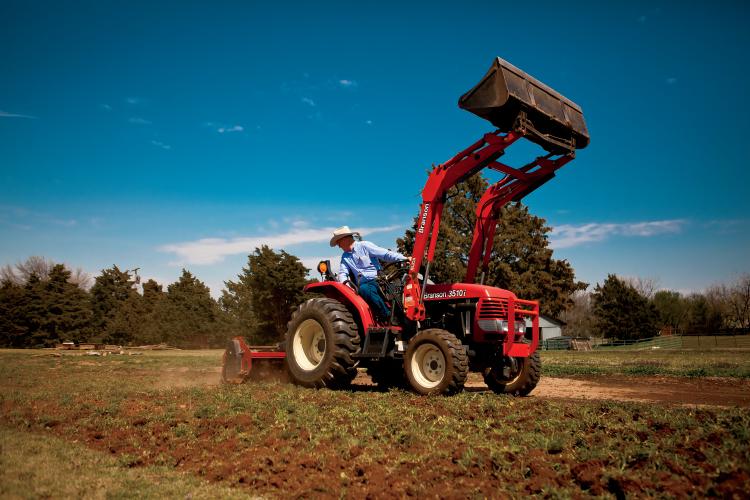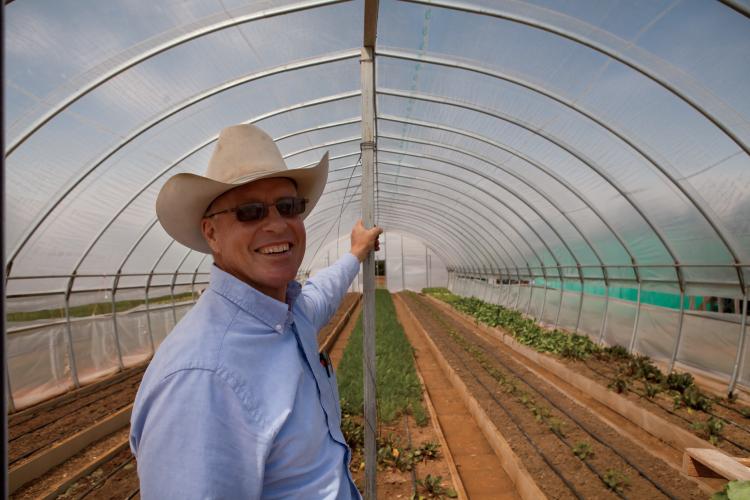Home > Oklahoma > Oklahoma Farm to Table > Local Produce Operations Crop Up in Urban Oklahoma
Local Produce Operations Crop Up in Urban Oklahoma

In a state where wheat and cattle dominate the rural landscape, farmer Steve Hill grows more than 25 varieties of fruits and vegetables in an urban setting.
Hill’s operation, Phocas Farms, certainly qualifies as nontraditional by crop choice. He and his wife, Lisa, heavily use plasticulture for growing vegetables on just 1.5 acres of an 8.3-acre property in the city of Edmond. They spread plastic over the soil, then cut small holes in the plastic for the plants. This use of plastic reduces the growth of invasive weeds and insects, plus it conserves natural resources.
Hill credits the Oklahoma Department of Agriculture, Food and Forestry for helping him jumpstart his in 2009. Initially, staff provided a wealth of advice. The department continues to help through farm diversification resources and new markets with the Farm to School Program.
“Without them, I probably wouldn’t have started, and without them, I probably wouldn’t have kept going,” Hill says. “Now, I’m too far into it to quit.”
At just four years in the business, the farm distributes produce to an Oklahoma City caterer, a retail store and the Edmond school system through Farm to School. This ODAFF program encourages a relationship between farmers and schools to put Oklahoma-grown food on students’ lunch trays. Hill also serves about 20 customers through a CSA, or Community Supported Agriculture, program. Consumers buy shares in the farm and receive a weekly bag of the farm’s bounty in return.
Hill says his produce feeds people within a 15-mile radius of the farm, which epitomizes local food. The local food trend is growing in Oklahoma, says Rodd Moesel, president of American Plant Products and former president of the Oklahoma Greenhouse Growers Association.

“Over the last five to six years, there has been a huge increase of interest in local food and folks wanting to get the chance to meet the farmers,” Moesel says.
CSAs, farmers markets and small groceries play integral roles in delivering local food to local people. Farmers otherwise face quantity challenges to market to big box retailers, but even these big retailers are trying to adapt to promote more local produce, Moesel says.
Community-based farmers markets have tripled from 26 to 63 in seven years, according to Nathan Kirby, market development coordinator with ODAFF. He also has observed an annual increase in CSAs, though the department has no method to statistically track them.
The last Census of Agriculture in 2007 reported 834 vegetable farms in Oklahoma. Moesel believes that number has grown dramatically since then, and includes many small farms. This trend benefits Oklahoma’s economy.
“Even though a lot of these farms are small, every activity has a multiplier effect,” he says. “It is creating new jobs and new income streams and new business within their local communities.”
He finds that specialty crop farmers increasingly use protected agriculture, including hoop houses and greenhouses, to extend their growing seasons to meet consumer demand.

“It’s exciting to see so much innovation, experimentation and growers sharing with other growers,” Moesel says.
In fact, Hill hopes to create a growing environment suitable for carrots during the entire school year. Through involvement with Farm to School, he learned of the school system’s significant use of this vegetable in its weekly menus.
This year, he will use ODAFF resources to complete his next goal: heated planting beds that can deliver consistent soil temperatures optimum for growing root crops like carrots.



